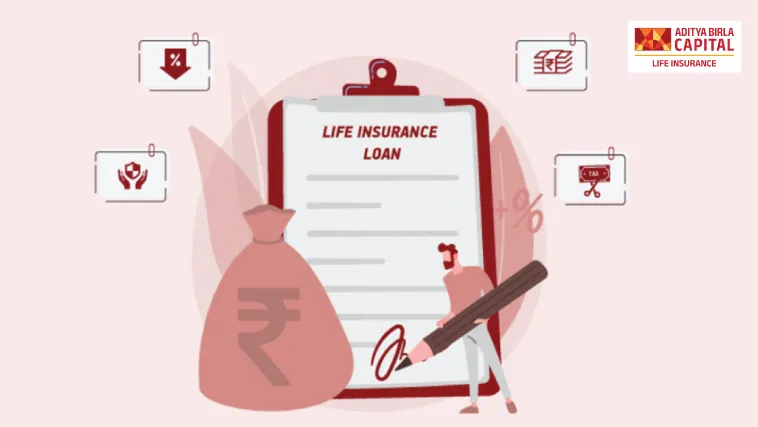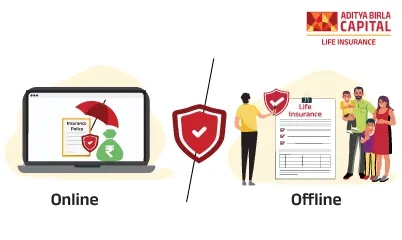Life insurance is not only a tool for providing financial security to your loved ones in the event of your death, but it can also serve as a valuable financial resource during your lifetime. One such benefit is the option to take a loan against your life insurance policy, which can provide you with the funds needed to meet various financial requirements. In this article, we will discuss life insurance loans, including the types of policies eligible for loans, the process of obtaining a loan on a life insurance policy, the advantages and disadvantages, and other important details that will help you make an informed decision.
What Is Loan Against Life Insurance Policy?
If you are in need of money without having to sell your other assets or converting your investments, you can make use of your life insurance policy. This means that you use your insurance policy as security to get a loan, commonly known as a loan against the policy. Here, your life insurance becomes collateral, making it a secured loan.
It is important to understand that not all insurance policies qualify for loans. Term insurance plans, for example, only provide a death benefit and do not accumulate cash value. This makes them ineligible for this type of financial assistance.
How To Get Loan Against Life Insurance Policy?
Here's how you can apply for a loan against your life insurance policy (LAIP)
- Visit Aditya Birla Capital’s website and navigate to the ‘Loan Against Life Insurance Policy - Aditya Birla Finance Ltd.’ page.
- Click on the 'Apply' button.
- Provide your personal information, such as your name, phone number, email ID, portfolio value, etc. Also, share details about any outstanding debts, like how much you've borrowed and your city.
- Make sure your loan amount falls within the range of Rs. 5,00,000/- to Rs. 1,00,00,000/-.
- Once all the details are accurate, click 'Submit'.
- After registration, download the application form and gather all required documents.
- If needed, our relationship manager will reach out to guide you through the process, ensuring that you complete the process seamlessly.
How Life Insurance Policy Loans Work
A life insurance policy loan allows you to borrow money from the insurance company using the cash value of your permanent life insurance policy as collateral. The loan amount is typically a percentage of the policy's cash value, which varies depending on the policy terms and conditions and the insurance provider. The interest rate charged on the loan is also determined by the insurance provider and is generally lower than those on personal loans or credit cards.
Repayment of the life insurance loan can be flexible, with options to pay only the interest or to repay the principal and interest over time. If the loan is not repaid, the outstanding loan amount, along with any accrued interest, will be deducted from the death benefit payable to your beneficiaries upon your death. Additionally, if the outstanding loan balance exceeds the cash value of the policy, the policy may lapse, leading to the loss of coverage.
Advantages Of Life Insurance Loans
-
No Credit Checks: Unlike traditional loans, life insurance loans do not require credit checks or extensive documentation, making it easier for policyholders to obtain the funds they need.
-
Lower Interest Rates: Life insurance loans generally offer lower interest rates compared to personal loans or credit cards, making them a more affordable borrowing option.
-
Flexible Repayment Terms: Life insurance loans offer flexible repayment terms, allowing you to choose between paying only the interest or repaying the principal and interest over time.
-
Tax Benefits**: In most cases, life insurance loans are not considered as income and are, therefore, not taxable. However, it is always advisable to consult a tax expert to understand the specific tax implications of taking a life insurance loan in India.
Disadvantages Of Life Insurance Loans
-
Reduced Death Benefit: If the life insurance loan is not repaid, the outstanding loan amount, along with any accrued interest, will be deducted from the death benefit payable to your beneficiaries, reducing the financial protection provided by the policy.
-
Potential Policy Lapse: If the outstanding loan balance exceeds the cash value of the policy, policy may lapse, resulting in the loss of coverage and any premiums paid.
-
Limited Loan Amount: The loan amount is typically a percentage of the policy's cash value, which may limit the funds available for borrowing, particularly if the policy is relatively new or has a low cash value.
Eligibility Criteria And Documents Required For Life Insurance Loans
Not all life insurance policies allow you to take out a loan. Usually, it is only permanent life insurance policies, like whole life or endowment policies, that have a cash value component, making them eligible. A term life insurance policy does not have this cash value feature, so you cannot use them for a life insurance loan. To see if your policy qualifies for a loan, check if it has a cash value and savings features. Policies like endowment plans or whole life plans typically do, while term plans do not.
Another thing to note is that you can only get a loan if your policy has a surrender value. For your policy to be eligible for a loan, it must have a surrender value. The insurance company sets the minimum and maximum loan limits, usually a percentage of the surrender value. For plans with guaranteed^ returns, this can be as high as 85-90%.
Basically, taking a loan against your insurance policy means borrowing from yourself. This usually means you will not face a tough approval process, and your income will not be the main factor. But your overall creditworthiness might still matter. Be sure to read all the terms and conditions of your policy carefully to understand the details.
Coming to documents, the requirements may vary from insurance company to insurance company. But here are some common documents that you may need to submit:
- Policy Document
- Proof of Identity
- Proof of Address
- Bank Statement / Cheque
- Proof of Income
- Any other document as requested.
How To Obtain A Loan On Life Insurance Policy?
To obtain life insurance loans, follow these steps:
- Review your policy documents and contact your insurance provider to confirm your policy's eligibility for a loan and determine the available loan amount and interest rate.
- Complete the necessary loan application forms provided by your insurance provider, which may include providing details of the purpose of the loan and the desired loan amount and repayment terms.
- Submit the completed loan application forms, along with any required supporting documents, to your insurance provider for processing.
- Upon approval, the insurance provider will disburse the loan amount to your bank account, typically within a few business days. Keep in mind that the loan disbursement process may vary depending on the insurance provider and the specific policy terms and conditions.










